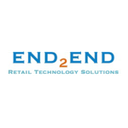How to Choose the Right Retail Software in 2025?
In 2025, the range of software solutions dedicated to the retail sector has expanded significantly. Between cloud solutions, integrated platforms, and specialized tools, it's easy to get lost! But don’t worry — here are some essential criteria to make the right choice and invest in a tool that truly meets your needs.
🧩 First and foremost: Define your needs!
Before even comparing solutions, take the time to clearly identify your expectations:
- ✅ Which sales or management processes do you want to digitize first?
- ✅ How many points of sale and users need access to the platform?
- ✅ What are your short- and medium-term goals (expansion, loyalty, customer experience, etc.)?
Tip: Involve all stakeholders (management, store teams, customer service, etc.) from this initial phase. Everyone will bring a complementary vision to create a relevant and comprehensive requirements document.
📱 An intuitive interface for all users
The most powerful tool is useless if no one uses it! Ergonomics must be at the heart of your choice:
- 🔹 Simple and intuitive interfaces to encourage adoption.
- 🔹 Smooth navigation, including for in-store teams.
- 🔹 Customizable dashboards depending on user profiles (department manager, store manager, leadership…).
Keep this in mind: your sales staff will use the software in real-time to handle transactions or check stock, while managers and executives may use it less frequently but will need detailed reports. The interface must be designed to meet these different levels of use.
🔄 Integration with your existing Retail ecosystem
A retail software solution never works in isolation. It should integrate smoothly with your other tools:
- 📊 Your ERP or accounting modules.
- 🏷️ Your stock and supply chain management systems.
- 🌐 Your e-commerce platforms and marketplace solutions.
- 📈 Your analytics and reporting tools.
Check the available APIs and existing connectors. Smooth integration will save you tedious double entries and ensure data consistency (sales, inventory, margins) across all your systems.
📈 Predictive analytics functionalities
In 2025, a good retail software solution does not just manage the present — it helps you anticipate the future:
- 🔮 Sales forecasts based on historical data and machine learning algorithms.
- 📊 Predictive customer segmentation to tailor your offers and inventory.
- 📉 Forward-looking dashboards to visualize evolving consumer trends.
These advanced features make all the difference between a simple point-of-sale tool and a true strategic partner for your retail network.
☁️ Cloud or On-Premise: Which architecture to choose?
The debate is still open! While cloud solutions offer flexibility and regular updates, some companies still prefer on-premise hosting for security or customization reasons:
- 🔒 Cloud: quick deployment, predictable costs, automatic updates.
- 🏢 On-premise: full control, advanced customization, internal security management.
Make your choice based on your specific constraints (data security, budget, IT resources, etc.).
💰 A transparent pricing model
Watch out for hidden costs! The total cost of ownership (TCO) goes well beyond the license price:
- 💳 Implementation and initial setup fees (installation, training).
- 🛠️ Maintenance and technical support costs.
- 💼 Additional module fees or major updates.
Don’t hesitate to ask for precise estimates over 3 to 5 years to have a clear vision of your investment and avoid budget overruns.
🚀 Change management support
A software solution never implements itself. Assess the quality of support provided by the vendor:
- 👨🏫 Training for administrators and store teams.
- 📝 Documentation and accessible learning resources.
- 🛟 Responsive technical support for urgent issues, on-site or remote.
The best providers engage in a true partnership that goes beyond simple software delivery: they support you at every stage and share market best practices.
🌱 Solution scalability
Your store network may expand, your sales channels may multiply. Your retail software must keep up:
- 📈 Handling a growing number of transactions without performance loss.
- 🧩 Modularity to add new features (click & collect, contactless payment…).
- 🔄 Regular updates integrating the latest innovations and retail trends.
A tool that seems perfect today may become outdated tomorrow if it doesn't evolve with your organization and the retail sector.
The Comparison of the Best-Known Retail Software Solutions!
| Retail Software |
Advantages |
Free Version |
Pricing |
Target Business |
| Lightspeed |
Comprehensive cloud interface, advanced analytics |
No |
From €99/month |
Growing boutiques and chains |
| Square for Retail |
Intuitive tools, payment & inventory integration |
Yes (basic version) |
Between €0 and €60/month (depending on plan) |
Small businesses and retailers |
| Shopify POS |
Seamless integration with Shopify online store |
No |
From €89/month |
E-commerce businesses expanding to retail |
| Cegid Retail |
Integrated ERP + retail suite, highly modular |
No |
From €159/month |
Large chains & franchise networks |
| Openbravo |
Modular open-source, robust inventory management |
No |
On request |
SMEs with strong customization needs |
| Orchestra Software |
Strong focus on multi-channel management |
No |
From €20/month |
Multi-store and franchise networks |
| POS France |
Cash register offer adapted to the French market, multiple features |
No |
Approx. €59/month |
Local shops and small businesses |
| Oracle Retail |
Global retail suite, powerful analytics |
No |
On request |
Large international enterprises |
💡 Note: This comparison is based on data available in 2025. Prices may vary — feel free to contact vendors directly for personalized quotes.
What Features Should a Good Retail Software Include?
A good retail management software goes far beyond just handling payments. It should be a true co-pilot for merchants and managers, providing a clear and actionable view of sales, inventory, and customer experience. Here's what you should expect from an effective tool in 2025.
📍 Stock mapping and real-time inventory management
Imagine a dashboard showing the status of your inventory per store: where there are stockouts, which items sell best, which products are overstocked. That's precisely what good retail software offers. It centralizes data and helps you make informed decisions — whether adjusting orders or launching promotions.
🔍 Customer reviews and feedback: continuous improvement of the shopping experience
Gone are the days of paper satisfaction surveys. Today, retail software includes customer feedback tools: online reviews, instant feedback, post-purchase surveys. Thanks to intuitive reports, you can identify strengths and areas for improvement (checkout waiting time, shelf clarity, service quality).
🎯 Promotions and marketing campaigns management
Effective retail software lets you schedule targeted promotions and track their impact in real time. Whether it's in-store promotions, digital coupons, or cross-channel campaigns, your tool should easily handle:
- Promotion rules (discounts, "3 for 2" offers, etc.).
- Channel coordination (website, mobile app, point of sale…).
- Sales tracking to adjust or extend a successful offer.
🚀 Loyalty programs and CRM
A good retail software isn't just for processing payments — it helps retain customers. It includes a CRM module or connects to your loyalty tools:
- Loyalty cards, reward points, integrated customer accounts.
- VIP programs or personalized offers.
- Data collection to better understand customer journeys.
Every purchase becomes an opportunity to strengthen customer relationships and offer a more personalized experience.
📊 Performance tracking and reporting: make informed decisions
Running a retail network without reliable data is like navigating without a compass. Retail software centralizes all information (sales, returns, margins) and generates key performance indicators (KPIs):
- Sales per store, average basket size, conversion rates, etc.
- Stock rotation and stockouts to avoid overstock or missed sales.
- Real-time dashboards to react quickly and effectively.
🔗 Interoperability and complementary tools: a seamless retail ecosystem
A powerful retail software doesn’t operate in a silo. It must integrate easily with other systems (accounting, HR, marketplace, warehouse management...). This interoperability prevents duplicate data entry and ensures a single data source, simplifying daily operations.
Who Uses Retail Software?
Retail software is like a central control tower where everyone has a role to play. From sales associates to executives, everyone benefits. Here's an overview of the main users.
👥 Sales associates: on the front line
They use the software daily at the checkout to:
- Scan items, record sales, and take payments.
- Handle returns and exchanges.
- Provide feedback on stock issues or challenges in real time.
📌 Store managers: operational leadership
Store managers are responsible for the performance of their store:
- Supervising sales and comparing daily results.
- Training teams on software use and promotion management.
- Analyzing customer feedback and stock levels to make quick adjustments.
🎯 Marketing and CRM teams: customer loyalty focus
They leverage customer data to create:
- Targeted campaigns (SMS, email, app notifications).
- Attractive loyalty programs.
- Cross-channel promotions with specific codes.
🏢 Executives and decision-makers: strategic oversight
Executives use strategic dashboards to:
- Analyze the profitability of each point of sale.
- Identify the most profitable customer segments.
- Anticipate supply needs based on trends.
🔄 External experts and consultants
In some cases, retail experts or consulting firms also use the software to:
- Conduct performance audits to optimize sales and inventory management.
- Develop growth strategies or enhance the customer experience.
- Provide recommendations for store layouts or new services.
Why Is Retail Software Essential in 2025?
Running a retail network without a dedicated tool in 2025 is like managing a business without a dashboard: risky, cumbersome, and inefficient. Here’s why retail software has become a strategic asset.
🚀 Multiple sales channels
With in-store sales, online orders with in-store pickup (click & collect), marketplaces, and social media, customer touchpoints have multiplied. A complete retail software solution helps unify these channels to offer a seamless and consistent experience.
🔍 Anticipating instead of reacting
Retail is all about planning: seasonality, promotions, events, collections... With powerful software, you can:
- Analyze consumer trends and adjust inventory accordingly.
- Plan sales campaigns well in advance.
- Adapt staffing to handle peak periods.
🎯 Attract, retain, and engage customers
Customer retention is a major challenge in 2025. Retail software provides:
- A 360° view of customer journeys (store, online, returns…).
- Personalized loyalty programs to reward top customers.
- Targeted promotions to boost engagement.
🎓 Optimizing team training and performance
Store teams must be multifunctional: checkout, merchandising, customer service, inventory management. Retail software supports:
- Role and task assignment.
- Tracking individual sales performance.
- Targeted training to improve skills (sales techniques, customer relations).
⏳ Saving time and automating repetitive tasks
Retail software also means significant time savings:
- Automating sales and payment processes, with direct accounting integration.
- Centralized inventory and labeling management.
- Automatic report generation: no more manual data entry.
How to Successfully Implement Retail Software?
Deploying retail software is not just about installing a modern cash register: it’s about transforming how you sell and manage stores. Here’s how to ensure a successful launch.
📌 1. Analyze needs and engage stakeholders
Before choosing software, ask yourself:
- Where does your network stand today? Manual stock management? Multiple unintegrated solutions?
- What are your goals? Customer retention? Boosting sales? Moving to omnichannel?
💡 Tip: Hold discussions with managers, sales staff, and cross-functional teams to define realistic requirements.
🔍 2. Compare solutions and choose the right tool
Not all retail software is the same. Test several solutions in real-life conditions and create a criteria checklist:
- Integration with existing systems (ERP, accounting, e-commerce).
- Customization (labeling, interface, marketing campaigns).
- Ease of use for store teams.
- Support and training.
- Total cost (licenses, deployment, maintenance).
💡 Tip: Check customer reviews and testimonials from your industry.
🏗️ 3. Confirm the choice and prepare deployment
Once selected, it's time for implementation. Key points:
- 📆 Clear timeline (setup, testing, go-live).
- 👥 Dedicated project manager to coordinate vendor and internal teams.
- 📂 Import existing data (products, stock, sales history, customer database).
💡 Tip: Start with a pilot phase (one or two stores).
🎓 4. Train users and manage change
Even powerful software is useless without adoption:
- 🎯 Train store managers on administration and setup.
- 🛠️ Train sales teams through tutorials and practical sessions.
- 📢 Communicate internally about benefits (time savings, unified view, better customer service).
💡 Tip: Share concrete examples (faster checkout, accurate inventory, improved promotions) to convince skeptics.
📊 5. Monitor adoption and adjust if necessary
After rollout, measure usage and adjust:
- What KPIs? Checkout errors, stockouts, customer satisfaction.
- What feedback? Are staff facing issues? Are managers using reports effectively?
- How to optimize? Refresher training, settings adjustments, future developments.
💡 Tip: Conduct a 6- and 12-month review to ensure the software meets your sales and customer satisfaction goals.
A Strategic Retail Project — Not Just a Tool!
Implementing retail software is much more than a technological investment: it’s a powerful lever to improve customer experience, build loyalty, and support the growth of your store network. With good preparation, tailored support, and careful monitoring, your brand will quickly reap the benefits. It’s your move! 🚀


